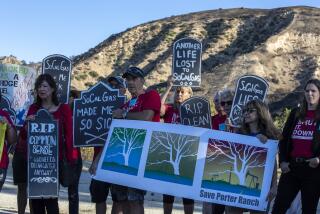Grand Canyon Haze
- Share via
In your story “Power Plant Partly Owned by L.A. Implicated in Grand Canyon Haze” (Metro, Oct. 12), you write that a National Academy of Sciences panel “sidestepped the central question” of whether scrubbers ought to be installed at the Navajo Generating Station to protect vistas at the Grand Canyon. Unfortunately, you don’t tell the reader why. As the one lawyer on the panel, perhaps I can supply the answer.
The reason is that the decision of whether to control Navajo Generating Station is not merely a scientific question. It is also a policy issue. It involves matters of value, such as “How much risk should we take that vistas in the Grand Canyon will be damaged? Which is better: to risk under-protection or overprotection?”
Scientists--even those as distinguished as those with whom I served on the NAS panel--have no special competence to answer these questions of value. For that reason, the Clean Air Act delegates these issues to the Environmental Protection Agency, which is responsible to the elected branches of government and the people.
All scientists can do is give policy-makers the best available technical analysis of an environmental problem. We tried to do that in our report. What the policy-makers should do with that information is an issue that goes beyond science.
CRAIG N. OREN
Visiting Professor of Law, UCLA
More to Read
Sign up for Essential California
The most important California stories and recommendations in your inbox every morning.
You may occasionally receive promotional content from the Los Angeles Times.













